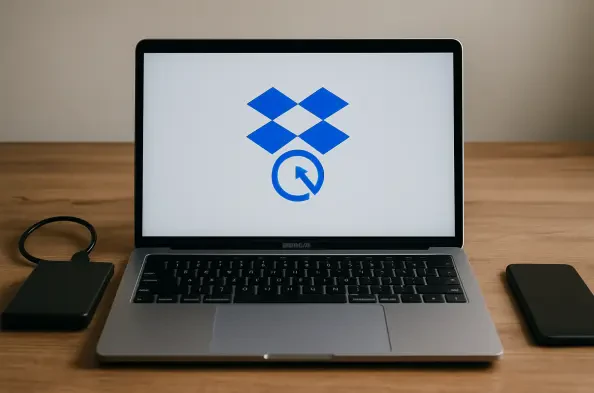In an era where data is often considered more valuable than gold, finding a reliable backup solution is a top priority for both individuals and organizations alike, with countless services promising security and ease of use to protect critical files from unexpected loss. Dropbox, a well-established name in cloud storage and sync services, has ventured into the backup arena with a feature that aims to safeguard data across personal and team accounts. While this addition seems promising at first glance, a closer examination reveals a stark contrast in its effectiveness depending on the user type. For solo users, the backup tool offers simplicity and seamless integration with existing Dropbox accounts, making it an attractive option for personal data protection. However, when it comes to team environments, significant risks emerge due to questionable data handling practices that could jeopardize critical information. This article delves into the nuances of this feature, exploring its strengths, limitations, and the potential hazards that teams must navigate when considering this solution for their backup needs.
1. Unveiling the Core Features and User Experience
Dropbox Backup emerges as a feature available across all account levels, including the free 5GB tier, positioning it as an accessible option for a wide range of users seeking to protect their data. Unlike traditional backup systems, it operates as a one-way sync with versioning, meaning files are uploaded to the cloud from a single device without reflecting changes made online back to local storage. This can be a double-edged sword—while it ensures the original device remains unaffected by online edits, it also limits real-time synchronization across multiple devices. Version retention is capped at 30 days for Plus plans and 180 days for Professional plans, unless additional fees are paid for extended periods. This restriction might catch some users off guard if they expect indefinite historical access to file versions without incurring extra costs.
Beyond the versioning aspect, the user interface for personal accounts is generally straightforward, though not without flaws. Folder selection is restricted to main Windows repositories, preventing users from backing up data stored in custom locations at the drive level—a limitation that may frustrate those with non-standard file structures. However, a redeeming feature is the ability to back up external drives with more flexible folder choices upon connection. Despite lacking advanced settings like encryption or email alerts, the simplicity of scheduling backups at intervals of 15 minutes, daily, or weekly caters well to users who prioritize ease over customization. For individual users already embedded in the Dropbox ecosystem, this backup tool integrates smoothly, though it falls short of being a comprehensive solution for complex needs.
2. Breaking Down the Cost Structure
Understanding the pricing model of Dropbox Backup is essential for evaluating its value proposition, as it is bundled with standard Dropbox storage plans rather than offered as a standalone service. For individual users, options include a free 5GB tier for minimal data needs, a Plus plan at $10 per month for 2TB of storage, and a Professional plan at $16.58 per month for 3TB. These tiers cater to varying levels of personal storage requirements, with the backup feature included at no additional cost. However, version retention beyond the standard periods incurs extra fees—$4 monthly or $40 yearly for one-year retention, and $6 monthly or $60 yearly for a decade-long archive. This added expense might deter budget-conscious users who need long-term access to older file versions.
For teams, the pricing shifts to a per-user model, with the Standard plan at $15 per month per user for 5TB of storage, and the Advanced plan for enterprise accounts starting at $24 per user with 15TB of shared storage. These plans include additional features like advanced key management and compliance tools, which are often unnecessary for smaller teams but inflate costs nonetheless. The financial commitment for team accounts, combined with the inherent risks in data handling, raises questions about whether the backup functionality justifies the price. While the cost structure aligns with Dropbox’s broader storage offerings, potential users must weigh these expenses against the limitations and risks, especially when considering team deployments where data integrity is paramount.
3. Setting Up the Backup Process Step by Step
Navigating the setup process for Dropbox Backup is relatively simple, though it requires users to follow a specific path within the application to initiate data protection effectively. To begin, launch the Dropbox client on the device intended for backup. Next, click on the profile icon located in the top right corner of the interface to access account-specific options. From the dropdown menu, select “Preferences” to enter the settings menu where various configurations can be adjusted. Within this menu, locate and click on the “Backup” tab in the left-hand navigation panel to access backup-specific settings.
Once in the Backup section, click “Choose Folders” to designate the data for protection, though be aware that selection options are limited to predefined repositories rather than allowing full drive-level browsing. For those using external drives, connecting one will trigger a prompt to back up its contents, offering more flexibility in folder selection compared to internal storage. This step-by-step approach ensures that even users with minimal technical expertise can initiate backups, though the restricted folder choices may limit its appeal for those with unique file organization systems. Following these steps allows users to schedule backups at desired intervals, ensuring data is protected with minimal ongoing effort.
4. Assessing Performance Across Account Types
When evaluating the performance of Dropbox Backup, a clear distinction arises between personal and team accounts, with individual plans demonstrating reliability and ease. Testing on the free personal plan revealed quick and seamless operation, with files uploading to the cloud without significant delays or errors. The primary drawback lies in the inability to select any folder for backup, as the system confines choices to standard locations. Despite this constraint, the overall experience for solo users remains positive, offering a no-frills solution for safeguarding essential data. This performance aligns well with the needs of individuals who prioritize simplicity over granular control, making it a viable option for personal use.
In contrast, performance issues become glaringly apparent with team accounts, particularly in the Standard tier, where data handling practices introduce substantial risks. During testing, a significant incident occurred where the system moved original data before completing the backup process, nearly resulting in permanent data loss when the operation was interrupted. This behavior, observed across both Mac and Windows environments, underscores a fundamental flaw in the design for team usage. Such unpredictability can lead to catastrophic outcomes, especially in scenarios involving large datasets or critical business information, highlighting the need for caution when considering this tool for collaborative settings.
5. Highlighting Critical Risks for Team Environments
One of the most alarming aspects of Dropbox Backup for teams is the way the Standard tier handles data, moving original files before securing a backup copy—a practice that defies basic principles of data protection. This approach risks data loss if the process is interrupted by user error, power failure, or system crashes, leaving no original copy to fall back on. Such a methodology is particularly concerning in team settings where multiple users depend on shared data integrity. The potential for disaster is not hypothetical; testing revealed instances where critical files were nearly lost due to this premature relocation, exposing a significant vulnerability that could impact business operations.
A specific incident during testing further illustrates the danger, where selecting a 225GB Documents folder for backup led to unexpected system slowdowns and data movement. Upon interrupting the process to address storage constraints, it became evident that original files had been relocated, with some inadvertently deleted in the aftermath. This raises critical questions about why the system assumes backup data should be treated as shared content and why it risks moving files before ensuring a secure copy exists. For teams managing existing data, this flaw renders the tool highly unreliable, necessitating alternative solutions until safer practices are implemented.
6. Final Recommendations and Future Outlook
Reflecting on the evaluation, it’s evident that Dropbox Backup serves individual users well, offering a straightforward and integrated solution for personal data protection within Plus and Professional plans. Its inclusion at no extra cost for existing Dropbox subscribers adds value, despite limitations in version retention and folder selection. Solo users who tested this feature appreciated the ease of setup and reliability, provided they were aware of the need for additional fees to extend file history beyond standard limits. The simplicity observed in personal accounts makes it a practical choice for those seeking basic backup capabilities without complex requirements.
For teams, however, the experience is markedly different, with significant risks overshadowing potential benefits. Moving forward, teams are advised to avoid the Standard tier on systems with existing data until the move-before-backup practice is rectified. Exploring alternative backup solutions that prioritize data safety over convenience is a prudent step for collaborative environments. Additionally, staying informed about updates to Dropbox’s policies on data handling could reveal improvements worth considering. As a next step, organizations should assess their backup needs against these risks, potentially integrating more robust tools while monitoring for safer iterations of this feature in the future.






